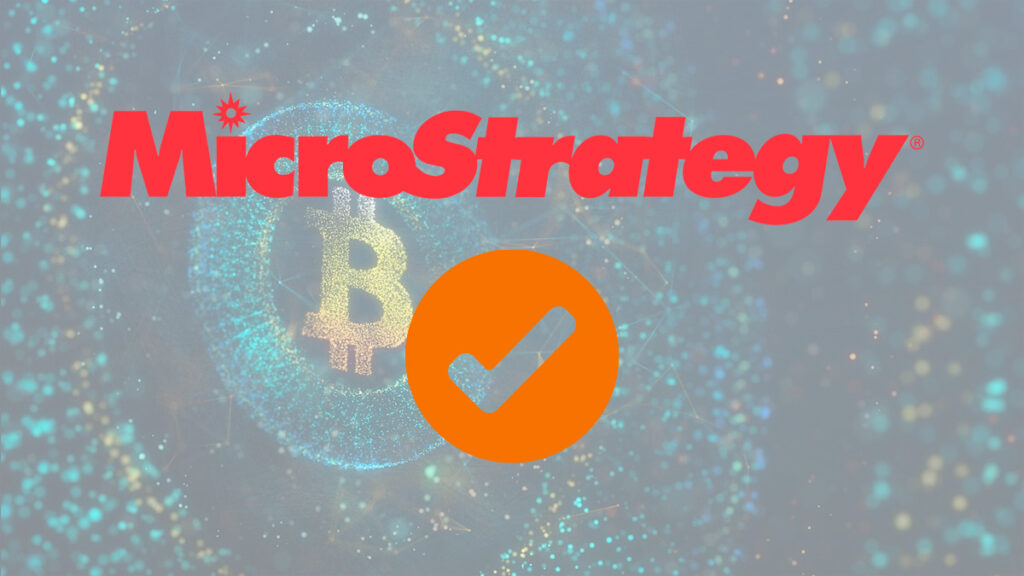TL;DR
- MicroStrategy’s Innovation: Launched the Orange Protocol, a decentralized identity solution on the Bitcoin blockchain, using Ordinal-based inscriptions for data storage and retrieval.
- Digital Identity Revolution: The protocol aims to create 10,000 decentralized identifiers (DIDs) for pseudonymous digital identities, anchored directly on the Bitcoin blockchain without sidechains.
- Applications and Security: Introduced Orange For Outlook to integrate digital signatures into emails, with plans to expand to other platforms, enhancing digital identity security using Bitcoin’s robust network.
MicroStrategy, the largest corporate Bitcoin holder, has launched the Orange Protocol, a decentralized identity solution anchored on the Bitcoin blockchain. This innovative protocol utilizes Ordinal-based inscriptions to store and retrieve data, marking a significant step forward in blockchain technology applications.
"Wouldn't it be great if instead of a blue check, green check, etc., there was an orange check that was a global standard? With MicroStrategy, maybe we could approach this idea of decentralized identity, with Bitcoin."
— MicroStrategy (@MicroStrategy) May 1, 2024
–@saylor, Executive Chairman, MicroStrategy… pic.twitter.com/KFaQH7CaZm
The announcement was made by Michael Saylor, MicroStrategy’s executive chairman, during the Bitcoin For Corporations conference on May 1. The MicroStrategy Orange is set to revolutionize the concept of digital identity, offering an open-source platform capable of managing up to 10,000 decentralized identifiers (DIDs) without relying on sidechains.
According to an unofficial draft on GitHub, the objective of MicroStrategy Orange is to establish trustless, tamper-proof, and enduring decentralized identities exclusively on the public Bitcoin blockchain. These decentralized identifiers (DIDs) will enable pseudonymity, akin to the distinction between real-world identities and Bitcoin transactions.
Cezary Raczko, MicroStrategy’s EVP of engineering, emphasized the importance of this development:
“Michael presented a very compelling case for why we need decentralized identity and DIDs. He made an even more compelling case for why it makes sense to anchor digital identity into the Bitcoin blockchain, protected by the strength and the security of the Bitcoin network.”
The Three Components of MicroStrategy Orange: Orange Service, Orange SDK, and Orange Applications.

The protocol comprises three main components: Orange Service, Orange SDK, and Orange Applications. The Orange Service enables users to issue DIDs to personnel, facilitating the deployment of applications. The SDK and Applications provide customization tools for integrating services on various devices.
A notable application developed by MicroStrategy is “Orange For Outlook”, which integrates digital signatures into emails, enhancing security and sender verification.
Users can start by accepting an invitation email signed by MicroStrategy’s DID, which generates a unique DID and key pair for them. These credentials are then recorded on the Bitcoin blockchain, allowing for secure digital identity establishment.
Saylor highlighted the potential of this technology:
“The whole idea of burning a piece of data on the blockchain opens the door to the possibility that I might burn a digital signature, or a registration, or a hash of a document. Enterprises currently have weak security compared to Bitcoin.”
MicroStrategy aims to extend the Orange applications to other platforms, including messaging apps, social media, and various industries, thereby strengthening digital identity security across the board. This initiative by MicroStrategy could pave the way for a new era of digital identity management, leveraging the robustness of the Bitcoin network.










